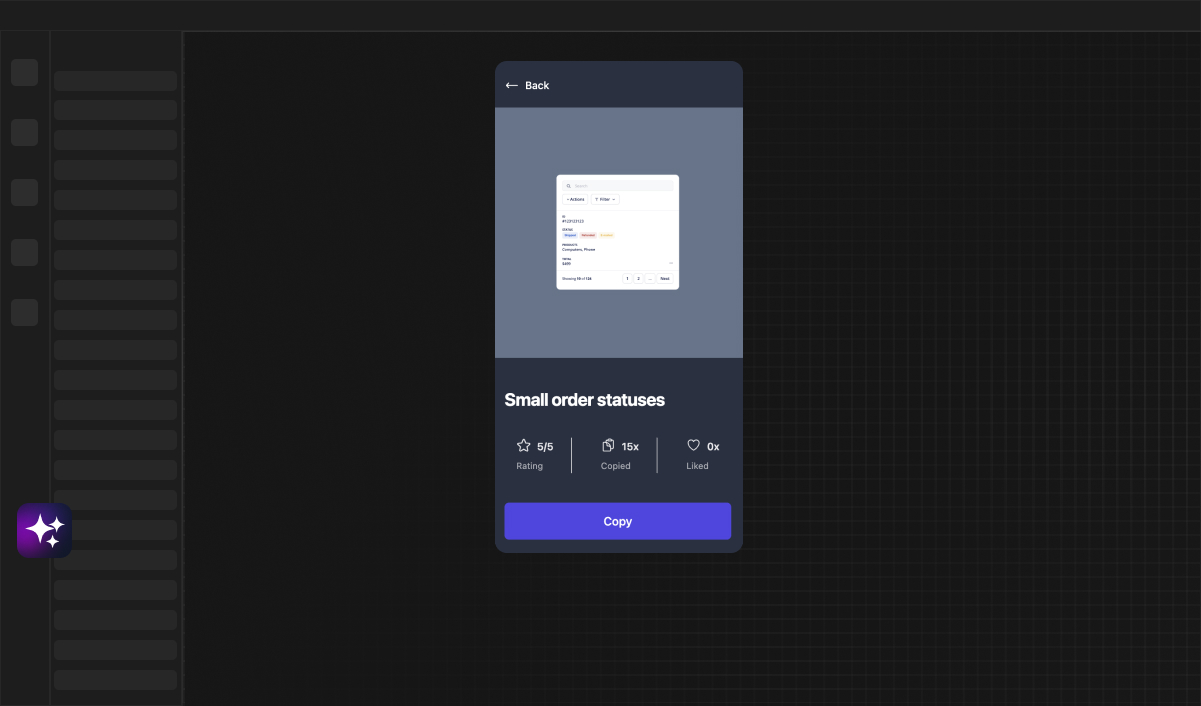
Web Developer
Reusable Elements in Bubble: Efficient App Design
Discover how to enhance your app design process with reusable elements in Bubble. Learn to streamline development, ensure consistency, and scale efficiently. Master the power of reusability for cost-effective and maintainable Bubble applications.
The world of web development is continuously evolving, with the emphasis on efficiency, consistency, and scalability. Bubble, as a no-code platform, has revolutionized how developers, entrepreneurs, and businesses bring their app ideas to life. Among its many features, the concept of reusable elements stands out as a cornerstone for efficient app design.
Understanding Reusable Elements in Bubble
What Are Reusable Elements?
Reusable elements in Bubble are components that can be created once and used multiple times throughout an application. These elements can include anything from navigation bars to complex data entry forms. By leveraging these elements, developers can ensure a uniform look and feel across different pages and parts of their applications.
The Importance of Reusability in Web Development
In web development, reusability is a key principle that drives efficiency and maintainability. When components can be reused, it reduces the amount of redundant work, minimizes the risk of inconsistencies, and simplifies the debugging process. Bubble’s reusable elements tap into this principle, allowing for a more streamlined development process.
How Bubble's Reusable Elements Function
Within Bubble, reusable elements work like building blocks. Once you create a reusable element, you can insert it anywhere in your application. These elements can be customized and come with their own set of properties and events, making them versatile tools in the app development toolkit.
Benefits of Using Reusable Elements in Bubble
Streamlining Your App Design Process
Using reusable elements significantly streamlines the app design process. With pre-made components at your disposal, you can concentrate on the unique aspects of your application, rather than reinventing the wheel for common features and functions. This approach not only saves time but also allows for a more organized workflow.
Ensuring Consistency Across Your Application
Consistency is crucial for usability and brand identity. Reusable elements ensure that the same components, with the same design and behavior, appear throughout your application, providing a cohesive user experience. This uniformity is especially important as your app grows in complexity and scope.
Reducing Development Time and Costs
One of the most tangible benefits of using reusable elements is the reduction in development time and associated costs. By cutting down on repetitive tasks, you can redirect resources to more critical areas or even reduce overhead, making your project more cost-effective.
Simplifying Maintenance and Updates
Maintenance is often overlooked in the rush to launch an application. However, as any experienced developer knows, it's a critical aspect of an app’s lifecycle. Reusable elements make maintaining and updating your application far simpler. Changes made to a reusable element automatically propagate throughout your app, eliminating the need to manually update each instance.
Examples of Reusable Elements in Bubble Applications
Common Reusable UI Components
Common UI components such as headers, footers, and buttons are prime candidates for reusability. They often feature in multiple areas of an application and benefit from a consistent design approach. In Bubble, you can easily create these elements once and drop them into your design as needed.
Data Elements and Custom Workflows
Bubble's flexibility allows for more than just UI components to be reusable. Data elements, like lists or charts, and custom workflows can also be encapsulated within reusable elements, which streamlines the handling of data operations and logic across your application.
Best Practices for Implementing Reusable Elements
Planning for Reusability from the Start
It pays to think about reusability from the onset of your project. Identifying common patterns and elements early on will guide you in creating a suite of reusable components that cover most of your application's needs. This foresight prevents redundant work later in the development process.
Naming Conventions for Easy Identification
Good naming conventions are essential for working with reusable elements. They help you and any collaborators to quickly identify the purpose of each element. A consistent naming strategy aids in managing your components efficiently, especially as your application grows.
Keeping Your Reusable Elements Organized
Organization is key to harnessing the power of reusable elements. Bubble allows you to manage your elements effectively, but a systematic approach to how you store and categorize these assets will save you time when navigating and updating your application.
Avoiding Overgeneralization
While reusability is beneficial, overgeneralization can lead to rigid and less useful components. It’s important to strike the right balance between generic functionality and the specific needs of your application. Make sure your reusable elements maintain a level of flexibility to accommodate different contexts and requirements.
Step-by-Step Guide to Creating Reusable Elements in Bubble
Initiating Your First Reusable Element
For those new to Bubble, creating your first reusable element is a simple process. The platform provides a user-friendly interface where you can define a new element, design its appearance, and specify its functionality without writing any code.
Customizing Properties and Events
Custom properties and events add a layer of interactivity and adaptability to your reusable elements. Bubble enables you to define these properties and configure events so that the element behaves correctly in various situations throughout your application.
Testing Reusable Elements for Consistent Performance
Testing is fundamental to ensuring that your reusable elements perform consistently across different parts of your application. Bubble’s preview mode allows you to test elements in context, ensuring reliability before deploying them in a live environment.
Seamlessly Integrating Reusable Elements with Your Bubble App
Connecting to Databases and APIs
Bubble’s reusable elements can be seamlessly integrated with databases and external APIs. This integration allows your elements to display dynamic content or trigger actions based on external data sources, providing powerful functionality to your application.
Dynamic Data Binding in Reusable Elements
Dynamic data binding is a feature that greatly enhances the utility of reusable elements in Bubble. By binding elements to data sources, you can ensure that they always display the most current information without additional manual intervention.
Responsiveness and Cross-Device Compatibility
Responsiveness and cross-device compatibility are critical in today’s multi-platform world. Bubble’s reusable elements can be designed to adapt to different screen sizes and devices, ensuring that your application delivers an optimal user experience no matter where it's accessed.
Challenges and Considerations When Using Reusable Elements
Managing Dependencies and Data Flow
One of the challenges when working with reusable elements is managing their dependencies and the flow of data between them. It’s crucial to understand how data is passed around and how elements interact with each other to prevent conflicts and ensure smooth operation.
Balancing Reusability with Customization Needs
While reusability brings many benefits, there will always be cases where customization is necessary. It's important to understand and plan for these situations, ensuring that your reusable elements can be sufficiently customized or extended to meet specific requirements.
Advanced Techniques for Reusable Elements in Bubble
Nesting Reusable Elements
For more complex applications, nesting reusable elements—placing one reusable element inside another—can prove highly effective. This technique allows for modular designs where components can be combined in various configurations to create sophisticated interfaces and workflows.
Using Custom States and Actions
Custom states and actions empower developers to make reusable elements even more dynamic and interactive. Through Bubble’s intuitive interface, you can define these states and actions to add a layer of customization and control to your elements, enhancing the user experience.
Community Resources and Support for Bubble Developers
Where to Find Pre-Built Reusable Elements
The Bubble community is a treasure trove of resources, including a plethora of pre-built reusable elements. These elements, created by fellow Bubble users, can be a great starting point for your own designs and can be customized to fit your needs.
Forums and Tutorials for Enhancing Your Bubble Skills
Bubble’s forums and a wide array of tutorials offer valuable support for developers at all levels. Learning from the experiences and tips shared by the community can accelerate your mastery of reusable elements and Bubble as a whole.
Real-World Success Stories: Reusable Elements in Action
Case Studies of Efficient App Design with Bubble
There are many success stories where developers have utilized Bubble's reusable elements to build efficient and scalable applications. These case studies illustrate the practical benefits of reusability and can inspire your own development strategies.
Testimonials from Bubble Developers
Hearing directly from developers who have successfully implemented reusable elements can be enlightening. Their testimonials often highlight best practices and creative solutions that you can apply to your own Bubble projects.
Scaling Your Application with Reusable Elements
Planning for Long-Term Growth
As your application grows, scalable design becomes increasingly important. Reusable elements are a key factor in ensuring that your app can expand and evolve over time without requiring a complete overhaul.
Reusable Elements and the Future of Bubble Development
As Bubble continues to develop as a platform, the role of reusable elements will likely become even more integral. Staying abreast of new features and best practices regarding reusability will position your projects for success now and in the future.
Final Tips for Mastering Reusable Elements in Bubble
Continuous Learning and Experimentation
Mastering reusable elements in Bubble is an ongoing process that involves continuous learning and experimentation. As you become more familiar with the platform and its capabilities, your proficiency in creating and managing reusable elements will grow.
Engaging with the Bubble Community for Feedback and Ideas
Engaging with the Bubble community can provide valuable feedback and fresh ideas for your projects. Collaboration and knowledge-sharing are key components of the Bubble ecosystem, and they can help you make the most of reusable elements.
Conclusion: Unlocking the Full Potential of Bubble with Reusable Elements
Reusable elements in Bubble offer a powerful way to design efficient, consistent, and scalable applications. By embracing reusability, you can streamline your development process, save time and resources, and focus on what makes your app unique. With the support of the Bubble community and a commitment to best practices, you can unlock the full potential of your Bubble projects, making your mark in the world of app development.
 Leer en
Español
Leer en
Español Leia em
Português
Leia em
Português


